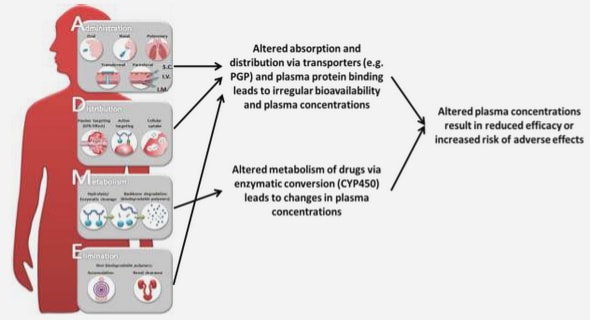Get Complete Project Material File(s) Now! »
Chapter 3: NATIONAL TRENDS IN HOSPITAL PRESENTATIONS FOR ACUTE ALLERGIC REACTIONS TO FOOD
In this chapter I describe temporal trends in New Zealand for hospital emergency department presentations with an allergic reaction to food. Due to difficulties inherent with the establishment of stable and repeatable measure of food allergy prevalence in the community or in primary care settings, hospital emergency department (ED) presentations for acute allergic reactions have been used in other countries to investigate temporal trends (Clark, Espinola, Rudders, Banerji, & Camargo, 2013; Clark, Espinola, Rudders, Banerji, & Camargo, 2011; Poulos, Waters, Correll, Loblay, & Marks, 2007; Rudders et al., 2010). While hospital event data only describes food-related allergic reactions at the severe end of the clinical spectrum, these data do allow for a measure of disease burden that is less subject to bias than those based upon self-report, or in the case of children, parental report.
My objectives for the projects reported in this chapter were to establish whether hospital event data could be used to describe temporal trends in allergic reactions to food in New Zealand and, if so, to describe trends over time in hospital presentations with allergic reactions to food.
New Zealand has a national collection of public and private hospital discharge information stored by the Ministry of Health in the National Minimum dataset (NMDS). The NMDS allows each person’s hospital presentation record over time to be investigated. Individual
hospital presentations are linked using the National Health Index (NHI) number, a unique identifier assigned to each person in NZ for use within health and disability support services.
To begin our investigation we obtained an anonymised data set from the NMDS of all emergency department (ED) presentations for food-related acute allergic reactions from 1988 to 2011 for children 0 to 14 years old. Upon initial analysis, it became evident that the majority of the episodes where a child presented to hospital with an acute allergic reaction it was coded as ‘anaphylaxis, unspecified’ or ‘allergy, unspecified’. This led to the need for a better understanding of the use of these codes in NZ. Therefore this chapter is divided into two parts.
Part 1 describes a chart review of all presentations from 1988 to 2011 of children (0 to 14 years old) to the public hospital ED in the Auckland District Health Board (ADHB) region, for which the ICD codes for ‘anaphylaxis, unspecified’ or ‘allergy, unspecified, were assigned. Part 1 includes a manuscript, published in the peer reviewed literature, and is included exactly as submitted, apart from being formatted consistently with the remainder of the thesis (rather than included in the published format); pages, tables, figures, and references in this article have been renumbered so that numbering is continuous throughout the thesis (McMilin, Camargo, Morton, & Grant, 2015). Part 2 is an investigation of temporal trends throughout NZ in emergency department (ED) presentations for food-related acute allergic reactions from 1988 to 2011 of children (0 to 14 years old).
Part 1: Understanding Administrative Coding of Emergency Department Visits for Unspecified Acute Allergic Reactions
Introduction
Emergency department (ED) visits for food-related acute allergic reactions enable estimation of temporal trends in food allergy prevalence. To use this approach in New Zealand requires an understanding of the proportion of ED visits coded as ‘anaphylaxis, unspecified’ or ‘allergy, unspecified’ that are food-related allergic reactions.
Methods
We reviewed all ED presentations of children, coded as ‘anaphylaxis, unspecified’ or ‘allergy, unspecified’, from 1988-2011 to the Auckland City Hospital ED. Charts were reviewed independently by two investigators to determine agreement on categorisation of presentations as being food-related acute allergic reactions. We compared ED presentation rates in different time intervals using rate ratios (RR) and 95% confidence intervals (CI).
Results
Sixty-five (29%) of the 221 ED presentations given a discharge code of ‘anaphylaxis, unspecified’ or ‘allergy, unspecified’, were a food-related allergic reaction. Inter-observer agreement was very good (kappa >0.80). The ED presentation rate with food-related allergic reactions in 2004-2011 was 98% higher than in 1988-1995 (RR=1.98, 95%CI 1.10-3.72). By contrast, ED presentation rates for non-food-related allergic reactions did not change over these years.
Discussion
ED presentations for food-related allergic reactions are identifiable from within ED presentations coded as ‘anaphylaxis, unspecified’ or‘allergy, unspecified’. ED presentations for food-related allergic reactions have increased over time in Auckland.
Introduction
Worldwide, food allergies have been the subject of much debate in recent decades due to what many observe as a dramatic increase in childhood food allergy prevalence, incidence, and severity (Moshe Ben-Shoshan, Turnbull, & Clarke, 2012; Burks et al., 2012; Sicherer, 2011; Sicherer & Sampson, 2014; Venter & Arshad, 2011). Despite New Zealand (NZ) having one of the highest prevalence of asthma worldwide, the epidemiology of other atopic diseases, including food allergy, has been poorly characterised (Asher et al., 2001; Asher, Stewart, Clayton, & Crane, 2008; The International Study of Asthma and Allergies in Childhood (ISAAC) Steering Committee, 1998).
Due to difficulties inherent with the establishment of stable and repeatable measures of food allergy prevalence in the community or in primary care settings, hospital emergency department (ED) presentations for food-related acute allergic reactions have been used in other countries to estimate temporal trends (Clark et al., 2013, 2011; Poulos et al., 2007; Rudders et al., 2010). Such an approach would seem particularly appropriate in NZ given that acute hospital based secondary care services are free, the hospital presentation data is stored and accessible at both a national and regional level, and each person having contact with health services in NZ is assigned a unique identifier: the national health index (NHI) number.
While hospital event data only describes food-related allergic reactions at the severe end of the clinical spectrum, these data do allow for a measure of disease burden that is less subject to bias than those based upon self-report, or in the case of children,
parental report. Rates of IgE-mediated food allergy can easily be overestimated as people confuse IgE-mediated food allergy with other, non-IgE-mediated, food intolerances. Rate estimates based upon studies that use self-reported data are often times based upon broad questions, for example ‘do you (or your child) have a food allergy?’ (McGowan & Keet, 2013). A systematic review of studies published from 1988 to 2009 showed that the prevalence of food allergy estimated from self-report data is much higher than that estimated when diagnosis is based upon skin prick testing, food specific IgE determinations or food challenges (Chafen et al., 2010). For example, based on the inclusion of 51 relevant studies, the pooled estimate for cow’s milk allergy prevalence from self-report was 3.5%, and from the other three methods was between 0.6% and 0.9% (Chafen et al., 2010). Population estimates of food allergy prevalence based upon self-reported data also vary widely between studies, ranging from 1.2% to 17% for milk, 0.2% to 7% for egg, 0% to 2% for peanuts and fish, 0% to 10% for shellfish, and 3% to 35% for any food (Rona et al., 2007).
Episodes of acute allergic reactions that result in ED presentations are identified by administrative codes based on the International Classification of Diseases (ICD) system. These codes include both those specific to food-related allergic reactions (e.g. contact dermatitis due to food in contact with skin, dermatitis due to food taken internally, anaphylactic shock due to peanuts) and those that are more generic (e.g. anaphylaxis unspecified, allergy unspecified).
Inconsistent code assignment and lack of a universally-accepted clinical definition for anaphylaxis have required that investigation of ED presentations for food-related allergic reaction presentations consider both visits coded as being food-related and visits coded as being due to an anaphylactic or allergic reaction not further specified (Clark et al., 2004, 2013, 2006; Gaeta, Clark, Pelletier, & Camargo, 2007; Rudders et al., 2010). In a study conducted across multiple United States EDs, relying solely on food specific ICD-9-CM codes resulted in identification of only 53% of patients presenting to the ED with a food-related allergic reaction whereas 87% of patients presenting with insect sting related allergic reactions were identified by the codes specific to insect sting related reactions (Clark et al., 2006). In another multi-site ED study from the United States, specifically of ED visits for food-related allergic reactions, 57% of patients were identified by using food-related allergic reaction codes and an additional 43% were identified from within less specific ICD-9 codes (Clark et al., 2004). Hence, the inclusion of only patients who are identified by ICD codes specific to food-related allergic reactions results in an underestimation of the true frequency of ED presentations (Clark et al., 2006; Poulos et al., 2007).
Chapter 1: INTRODUCTION
Aims
Research Questions
Overview of Thesis
Chapter 2: LITERATURE REVIEW PART ONE – EPIDEMIOLOGY OF FOOD ALLERGY
Contemporary issues in the diagnosis of IgE mediated food allergy
Spectrum of clinical presentation of food allergy
Food allergy as a component of the atopy disease spectrum
Prevalence, incidence, and trends world-wide
Chapter conclusions
Chapter 3: NATIONAL TRENDS IN HOSPITAL PRESENTATIONS FOR ACUTE
ALLERGIC REACTIONS TO FOOD
Chapter objectives
Part 1: Understanding Administrative Coding of Emergency Department Visits for
Unspecified Acute Allergic Reactions
Abstract
Introduction
Methods
Statistical analyses
Results
Discussion
Part 2: Hospital Presentations Due to Acute Allergic Reactions Related to Food .
Abstract
Introduction
Methods
Statistical analyses
Results
Discussion
Chapter conclusions
Chapter 4: LITERATURE REVIEW PART TWO – CAUSATION OF FOOD ALLERGY
Child characteristic
Environmental exposure
Distal environmental exposures
Macro environmental exposures
Chapter conclusions
Chapter 5: CHILDHOOD PEANUT ALLERGY IN NEW ZEALAND CONTEXT
Introductio
Methods
Measurement
Results
Discussion
Chapter conclusions
Chapter 6: LITERATURE REVIEW PART 3 – THE IMPACT OF A FOOD ALLERGY ON FOOD ALLERGIC FAMILIES
Food allergy’s impact on the family’s emotional health
Food allergy’s impact on the family’s physical health
Food allergy’s impact on the family’s social health and well-being.
Chapter conclusions
Chapter 7: THE IMPACT OF A FOOD ALLERGY ON NEW ZEALAND FOOD ALLERGIC
FAMILIES
Abstract
Introduction
Methods
Results
Discussion
Chapter conclusions
Chapter 8: DISCUSSION
Principal findings
Limitations
Research implications
Opportunities for further research
GET THE COMPLETE PROJECT
Childhood food allergy in the New Zealand context: An exploration of trends, prevalence, risk factors, and the impact on quality of life


